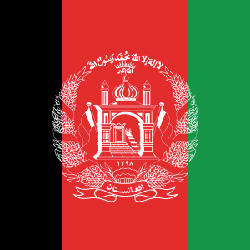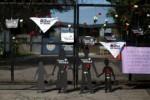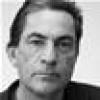The Hot New Luxury Good for the Rich: Air
When I stepped into John Roe’s apartment early last December, slipping off my boots at the elevator that opens into the home, it wasn’t immediately clear that people inhabited the space, let alone a child. The four-bedroom, four-and-a-half bath Manhattan residence looked like a showroom. In the living room, a white minimalist couch with no arms confronted two white bouclé chairs. White couch, white lamps, white walls. Even Roe’s wife, Cherry, wore white. Charlotte of the Upper West Side has no dust, she told me—unlike the couple’s previous home, on the sixty-second floor of the Four Seasons Private Residences. Above my head, gentle classical music issued from invisible speakers.
Roe, a ruddy Asian man who wore a pink polo shirt tucked into khaki pants, is the developer of this nine-story brick and terra-cotta building, named after his daughter. His goal, Roe said, was to create the most immaculate and sustainable indoor environment possible. He obtained a Passive House Institute certification, which recognizes when buildings minimize the energy used for heating and cooling with airtight seals and insulation. (Such measures can decrease energy consumption by up to 90 percent.) To reduce residents’ inhalation of volatile organic compounds, Roe employed nontoxic building materials. Indeed, the star of Charlotte is its air. Each unit sports its own Swiss-engineered ventilation system, called Zehnder. On an iPad, Roe showed me the app that gives residents control over what they breathe.
The building’s approach to filtration is undeniably sophisticated. The air in each unit isn’t shared with any other. Outside air is brought in, filtered, treated with an ultraviolet-C light that kills 99.9 percent of pathogens, and completely changed out once per hour. Circulation can be boosted or slowed. Most apartments with similar systems recycle the air every four to five hours a day. “We were thinking, if we’re already going to build a Ferrari, then why would we only give it a 200-horsepower engine?” Roe said. “Let’s put a 1,000-horsepower engine into it.” The quadruple-layer, triple-paned windows feature museum-quality glass and are generally opened only for cleaning. Otherwise, you’d let in air far dirtier than what’s circulating inside.
At night, when Roe’s family is sleeping, it “smells like you’re camping, because the fresh air is getting pumped in at such a rapid rate,” he said. You know the air is good, he told me, because the hydrangeas last. Typically, when cut at the stem and arranged in a vase, the delicate flowers wither and droop in a few days. In his apartment, the blooms will stay perky for nearly two weeks.
Walking down the long hallways, I took deep, greedy breaths. There was a complete absence of odor, yet somehow the air felt bright, abundant—the opposite of stuffy, the inverse of stale.
On June 7, 2023, New York City briefly had the worst air quality in the world. The sky turned auburn as smoke from wildfires in Canada spread throughout the boroughs. The horizon vanished into an orange haze. It was not hard to feel that we were living in an era Stephen Pyne, an emeritus professor at Arizona State University, has called the Pyrocene. Last year, at one point or another, New York, Chicago, Pittsburgh, Columbus, Detroit, and Portland, Oregon, all had air in the “hazardous” or “unhealthy” range, according to the Environmental Protection Agency. A September 2023 study found that wildfires have erased 25 percent of air-quality improvements made since 2000. By mid-2023, the average American’s smoke exposure was worse than their total cumulative exposure every year since 2006.
Unlike other effects of climate change, the environmental reporter Oliver Milman has argued, smoke will be more egalitarian, affecting “the wealthy and white as well as poor people of color.” After all, smoke doesn’t care about neighborhoods or country borders. Primarily made up of fine particulate matter less than 2.5 microns long, it is mobile, and small enough to intrude nearly anywhere.
In New York over the summer, outdoor after-school activities were canceled. New Yorkers were told to stay inside and shut the windows. Experts advised using air conditioners to recirculate indoor air, and supplement with additional purifiers, if available. (These sold out quickly at local stores.) At Charlotte and a growing number of high-end apartments and condos, advanced filtration systems kicked into gear. Elsewhere, people were not so lucky. Around three-quarters of the buildings in New York were constructed before 1960, and thus before central air conditioning was commonly installed. In my apartment in Greenpoint, Brooklyn, it smelled like a group of smokers had lit up and had a party. The hydrangeas I buy at the farmer’s market die tragically quickly on my kitchen table.
Once enclosed inside, the air we breathe is not the same. The notion that smoke could be a democratizing force, afflicting everyone equally and perhaps motivating them to take action to mitigate worsening climate conditions, is already colliding with the reality of an emerging luxury air market, yet another example of how, as the environment becomes less habitable, the wealthy will continue to insulate themselves from its worst aspects—even as their lifestyles disproportionately fuel emissions. As the fervor for ventilation that began during the pandemic meets the need to blockade against smoke, some wealthy people will do anything, and pay any amount, to guarantee they will always have a breath of fresh air.
Take a casual scroll through luxury real estate listings today, and you’ll find that Charlotte of the Upper West Side is not alone: Many buildings are enticing buyers with the promise of an exceptional breathing experience. A $1.5 million apartment in Battery Park City boasts “twice-filtered outdoor air,” while a Gramercy condo for $3.1 million notes that it has “filters in the common and amenity areas for premium and fresh air ventilation.” At Rose Hill in NoMad, where apartments range from $2 million to $6 million, air filters occupy every corner of the building, including common areas, and there are additional “perimeter walls and floor slabs to thwart transmission of air, odors and contaminants.” A 2023 roundup from City Realty listed more than a dozen current properties in New York City that brag about just how clean their air is. “Air is being marketed as a luxury product feature,” said Richard Peltier, a professor of environmental health sciences at University of Massachusetts Amherst, who began studying air quality in graduate school, when he collected and examined air filters from buildings in the Bronx. “You know, it comes with a gym, and a concierge, and a HEPA filter.”
In California, which has a longer history of smoke events, the high-end air market has already taken off. In 2020, the Los Angeles Times covered how Gregory Malin, a developer based in San Francisco, began marketing the air inside a property as an amenity just like a gym or a three-car garage. Carl Gambino, a real estate agent with Compass in Los Angeles, told the newspaper that his most recent multimillion-dollar sales could be directly linked to their state-of-the-art filtration........
© New Republic






















 Toi Staff
Toi Staff Andrew Mitrovica
Andrew Mitrovica Belen Fernandez
Belen Fernandez Gideon Levy
Gideon Levy Rachel Marsden
Rachel Marsden Tarik Cyril Amar
Tarik Cyril Amar Warren J. Blumenfeld
Warren J. Blumenfeld Dr Ramzy Baroud
Dr Ramzy Baroud Patrick Gathara
Patrick Gathara Brad Glosserman
Brad Glosserman
